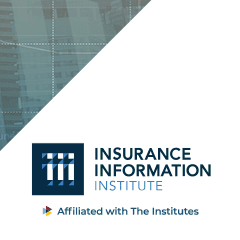
By Max Dorfman, Research Writer, Triple-I
The average claim payment per insured personal vehicle rose between 2002 and 2022, with higher payments by insurers more than offsetting declines in frequency, according to new research by the Insurance Research Council (IRC) – like Triple-I, an affiliate of The Institutes.
“During the first half of the study period, the combination of declining frequency and increasing severity left average insurer loss costs relatively unchanged,” said IRC president and Triple-I chief insurance officer Dale Porfilio. “However, as claim frequency leveled off and claim severity accelerated, the average payment per insured vehicle for most coverages began to climb steadily until the 2020 drop due to COVID-19. By 2022, however, average loss costs for nearly every coverage had surpassed the 2019 level.”
Frequency for both property damage liability and bodily injury liability claims fell more than 2 percent annualized over the period from 2002 to 2022, while the average payout per insured vehicle increased over 2 percent for both types of claims over the same period.
Claim frequency – which decreased sharply during the coronavirus pandemic – remained below pre-pandemic levels in 2022, while claim severity skyrocketed, with the average loss cost also increasing. Accelerating growth in claim loss costs is a key driver of rising insurance costs for consumers.
Costs also varied widely from state to state. The combined injury average loss cost in the highest state, Florida, was over five times the loss cost in the lowest state, North Dakota. Traffic conditions, medical prices, policy limits and other insurance regulations, litigiousness, fraud, and the design of the injury tort or no-fault environment all influence these costs.
Pandemic upended insured vehicle costs
During the height of COVID-19, insurers returned $14 billion of premiums to consumers through discounts, rebates, and dividends due to fewer drivers on the road. However, risky driving behaviors like speeding and distracted driving appeared to compound while the roads were quieter. Consequently, traffic fatalities increased in 2020, despite the large drop in miles driven, with the average auto claim severity rising.
In 2021 and 2022, vehicle traffic resumed and claim severity worsened as risky driving behaviors continued. As a result, traffic fatalities rose in 2021, hitting the highest levels in 15 years. This also marked the highest percentage increase since the current reporting system began in 1975.
Although some of these pressures may stabilize, the IRC report notes that the claim environment is likely to remain challenging as people continue to exhibit risky driving behavior. Additionally, longer-term pressures on injury claim severity from cost drivers, such as heavy medical utilization, cost-shifting, and claim abuse, continue to increase insured vehicle costs.











